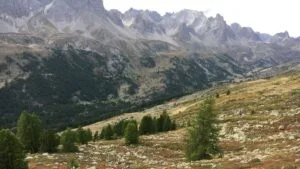Abstract/Description
Climate change is reshaping mountain agroecosystems, challenging traditional practices in regions where environmental conditions are rapidly evolving. As temperatures get warmer, suitable areas for agriculture shift to higher elevations. However, there is limited information on the potential of upward elevation shifts as a viable adaptation strategy for mountain vineyards and potential consequences for natural ecosystems and biodiversity, as current studies have predominantly focused on established lowland sites. By integrating multi-scale climate projections, land suitability analyses, and socio-ecological assessments, this research quantifies the extent of vineyard area loss at lower elevations, the potential for expansion in higher zones and ecological conflicts that might arise due to these shifts in elevation.
Preliminary modelling indicates that rising temperatures may render existing vineyard sites less viable, leading to a decline in traditional cultivation areas at lower elevations between 200 and 300m. Higher elevations above 1000m a.s.l. could emerge as promising options for climate change adaptation, potentially compensating for the losses incurred at lower altitudes. However, this upward shift poses significant socio-ecological challenges, such as disruption of local biodiversity, intensification of extensive grasslands and pastures or altered landscape aesthetics.
By contrasting the agronomic benefits of preserving and expanding viticultural areas through elevation shifts with the associated ecological risks for sensitive high-elevation ecosystems, this research offers an integrated framework for strategic land-use planning. The outcomes aim to inform adaptive management strategies that balance agricultural productivity and quality with the conservation of mountain biodiversity, ultimately contributing to more resilient mountain landscapes in the face of climate change.



